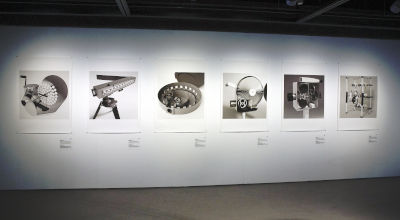„ln his Manifesto of Computer Art, Tamas Waliczky stated
that 'computer art does not yet exist'. It was 1990. Tamas then went on
to create a work of computer art inspired by the great cross-media
experimentalist Moholy-Nagy.
At the age of nine Tamas began to make animated cartoon films and
comics. And twenty years later he won the Golden Nica for Computer
Graphics at Ars Electronica in Linz. Ever since then his constantly
evolving oeuvre of ground- breaking digital art works have set
benchmarks for the development of media art in the 20th and 21st
centuries.
Tamas art practice is a dialogue with the potentialities and constraints
of technology. It is an examination of both the technical and
philosophical nature of newmedia.
His many masterpieces like The Garden and Wheels, are research into the
fundamental properties of digital visualization, which by means of
technological innovation arrive at pan-aesthetic expressions that are
profound existential meditations.
In recent times there have been extraordinary transformations in the
techniques that record, represent and fabricate the audiovisual
narratives of our lives.
Tamas's works articulate and interrogate major aspects of this radical
shift with a sensitive understanding of the history of new media.
Going from hand drawn animations to computer graphics he has traveled
from analog to digitaI modes of creative expression and from mechanical
to electronic means of production.
But not wanting to abandon the past, the Imaginary Cameras that Tamas
has fabricated are masterful analog mechanical digital electronic
hybrids.”
Jeffrey Shaw: Opening speech for Waliczky’s exhibition at the 59
Biennale Arte 2019 (excerpt)
„Tamas Waliczky is an animation and new media artist who has been a
Professor at the School of Creative Media since 2010, having been
previously a colleague of Jeffrey Shaw’s at ZKM. He began making
animations at the age of 9, and then worked as a painter, illustrator,
photographer and animator. He discovered the creative possibilities of
computers in 1983 while working at one of the first game design studios
in Hungary. In computer animations like The Garden (1992), The Way
(1994), Landscape (1996), and the Fisherman and his Wife (2000),
Marionettes (2007) and the Adventures of Tom Tomiczky (2011), Waliczky
uses the medium of digital animation to enhance, intensify, and make
strange ordinary human perception with machine-mediated visionary
worlds, while at the same time anchoring the spectator within the
familiar and the human, through the representation of quotidian
environments and people drawn from his circle of family and friends.
Since arriving at SCM, Waliczky completed several major artworks
including Wheels (2013), in which Waliczky simulated a living universe
with its own rules, Homes (2012/2015), a virtual reality cultural
heritage project, and the remarkable series Imaginary Cameras (2016-19)
which had its culminating show in a pavilion at the Venice Biennale
where Waliczky represented his native country, Hungary.
Waliczky has collaborated with his wife, Anna Szepesi, since the early
eighties. Anna is not only the artistic adviser for most of his works,
but she appears as her digital avatar in a number of them.
Waliczky has won numerous international awards including the Prix Ars
Electronica (Linz) and the Prima Primissima Prize (Hungary), and his
works are found in many public collections.”
Richard Allen, dean of School of Creative Media, City University of Hong
Kong, 2020

“Art Machines Past/Present” exhibition, 2020